Twenty minutes into the contest, chef Brett Cavanna realized the kitchen’s heat was going to be too much for his pâte brisée tart dough, so he bee-lined it to the freezer for a quick chill. On the way back, Cavanna hit the walk-in (restaurantspeak for a big refrigerator), frantically foraging for what he’d hope would be award-winning tart filling. As he passed the six-burner gas stove he was assigned for the night, it was all fire and fury: He threw down two pans, cranked up the heat and tossed kale and butter into one, pepitas into the other.
During the 60 minutes leading up to midnight on the last Tuesday of every month, the Chefs After Dark Series in Kittery is all about adrenalized competition.
But the remainder of these evenings has a different intent, or at least impact – cultivating a tight-knit culinary community. The monthly events don’t kick off until most of the rest of us are winding down, about 10:30 p.m. At that late hour, as many as 90 chefs, sous chefs, line cooks, garde-manger (cooks who prepare only cold foods), waiters, bartenders) and maitre d’s from restaurants in southern Maine and coastal New Hampshire hang up their aprons at their own places and head to Anneke Jans – the Wallingford Square bistro that hosts Chefs After Dark. There, they slip the bartender a credit card for the purpose of running a generous tab. Let the games begin.
Since February 2014, the Chefs After Dark events have pulled in attendees from as far south as Seabrook and west to Dover, New Hampshire, and north to Ogunquit. They open with a half-hour of heavy socializing for restaurant industry folks who rarely get to meet up en masse; have at one time or another worked in the same kitchen as half the other cooks in the room; understand how hard the restaurant grind can be; relish the opportunity to catch up on each other’s lives outside the kitchen; and, willingly mentor younger cooks.
“Yes, we’re rivals in the sense that there are a lot of restaurants competing for the same customers,” said Anneke Jans’ chef Lee Franke (formerly of Arrows in Ogunquit, Bonta in Hampton and Brazo in Portsmouth) who conceived the idea with David Vargas of Vida Cantina in Portsmouth (formerly of Bonta) and gained permission from Anneke Jans’ owner Jason Canty to host the series. “But we’re also close friends who talk about food constantly, learn from each other regularly, and inspire each other to cook the best food we can every day.”
The format of the monthly get-togethers mimics The Food Network’s “Chopped,” where chefs, two in this case versus the reality show’s four, who are well-matched in experience and cooking styles, are pitted against each other and several mystery ingredients. Local suppliers donate the often exotic ingredients, such as chicken feet, curry leaves and bitter cucumber (December 2014 when Franke and Vargas squared off); or cod roe sack, sunflower buds and lamb sweetbreads (August 2015); or blue Hubbard squash, local apples and tripe (late last month).
According to the rules of the contest, competing chefs must each make two dishes inside of an hour, and all the ingredients must be well represented on the plates they present to the judges.
When tripe, bequeathed by Carl’s Meat Market in Kittery after butchers there were asked to provide “something extraordinary,” was unveiled as an ingredient for the most recent gathering, the crowd groaned; most knew it is nearly impossible to tenderize rubbery cow’s stomach in just one hour. The two Portsmouth chefs on the line, Brett Cavanna of Louie’s (his first New Hampshire seacoast gig) and Sam Ostrow of BlockSix (formerly of The Black Trumpet in Portsmouth and The Black Birch in Kittery), both immediately turned to Franke’s five-gallon stash of chicken stock: They’d simmer the tripe first, figure out how to use it later.
When you’re the chef in the hot seat, you have to cook on instinct, said Matt Louis of Moxy in Portsmouth, who faced off against Evan Hennessey of Stages at One Washington in Dover in the August challenge. In September, the two were tapped, along with Mark Segal, corporate chef at Tinios Pro Hospitality Group, to judge the tripe dishes.
“You grab the ingredients you don’t know, taste them raw and match their similarities to the products you do know and go from there,” Hennessey said when asked about his strategy.
Neither Louis nor Hennessey had ever cooked sunflower buds before, for instance, but as they peeled back the unformed flowers, they found a core much like that of an artichoke and so treated them as such. Nor could either recall exactly what they’d done with the buds – keep in mind that both have created and served thousands of plates in the two months since. But both recollected the intensity of the competition, when all 12 burners on Franke’s stoves were going at full throttle.
In September, as the more seasoned chefs relaxed, and Cavanna and Ostrow cooked, a more junior set of culinarians peered into the open kitchen, leaning on a thick oak butcher block used to serve dishes to Anneke Jans patrons during regular hours. Most alternated between sipping from cans of PBRs in one hand and snapping pictures of the contestants’ techniques with iPhones in the other. This crew claims no trademarks – everything can be copied at will.
“This community is always growing,” Anneke Jans’ sous chef Justin Hewitt said. At last count, there were over 100 fine-dining restaurants just south of the Memorial Bridge that connects Portsmouth to Kittery and about 70 just north of it. Initiatives like Chefs After Dark “let you see how different chefs use different techniques to manage the same product,” he said.
Back at the stove, as the tripe simmered, Cavanna and Ostrow both sliced the Hubbard squash, removing the seeds but keeping the blue-gray skin intact. Cavanna grilled his squash slices alongside quartered apples while Ostrow tossed his with olive oil and seasoning and roasted them. As they bustled between their stations, the pantry and the walk-in for complementary ingredients – Cavanna selecting kale, goat cheese and a pound of butter to make a tart (see recipe at right) and Ostrow picking out white and red radishes, pickled tomatoes and Mexican sour gerkins to plate a composed salad with a buttermilk–husk cherry dressing – they kept their work spaces meticulously clean and announced their movements with commands like “hot behind”; such commands keep cooks safe as they work in small, tight, fast-paced kitchens.
Five minutes before the stroke of midnight, the process of plating began, each chef’s hands moving quickly and precisely between hot pans and their plain, white ceramic plate canvases. The judges would consider the look of a dish, not just its taste. Cavanna and Ostrow delivered their first courses in tandem to the judges’ white-clothed table in the dining room, quietly explaining each dish before running back into the kitchen to finish their second courses.
In the end, Cavanna opted to minimize the amount of chewy tripe but maximize its flavor by charring it, slicing it into thin strips and serving it atop a pumpkin, Hubbard squash, grilled apple and yogurt bisque. Ostrow, on the other hand, served the offal in its full glory, piling thick slices high in a bowl with the turnip and its greens, heirloom tomatoes and apples he had stewed the tripe with.
The judges snapped pictures of each dish, tasted, paused, and tasted again before passing plates and tasting spoons to the other chefs who’d gathered around the table so they could sample dishes, too.
In the end, the supplementary dishes decided the winner: Cavanna’s tart edged out Ostrow’s salad by less than half a star. Franke awarded the winner a wooden meat mallet and the runner-up, a wooden spoon.
Everyone in the room laughed off the prizes, sang “Happy Birthday” to one attendee and toasted the nuptials of another, understanding, it seemed, that the competition’s result had very little to do with the evening’s real value.
Christine Burns Rudalevige is a food writer, recipe developer and tester, and cooking teacher in Brunswick. She writes about feeding her family Maine seafood at www.familyfish.net. Contact her at: cburns1227@gmail.com
Sautéed Apple, Kale and Goat Cheese Tart
When Brett Cavanna, chef at Louie’s in Portsmouth, New Hampshire, was competing in the most recent Chefs After Dark contest on Sept. 29 in Kittery, it was a rendition of this tart that helped him edge out his competitor. Since most home cooks have neither the pantry Cavanna had at his disposal nor his training, Christine Burns Rudalevige adapted the tart for home cooks.
Makes 1 (9-inch) tart
Dough for 1 (9-inch) pie crust
1 cup plain yogurt
¼ cup olive oil
2 tablespoons coarse-grained mustard
2 teaspoons fresh lemon juice
1/2 teaspoon sugar
Salt and black pepper
Pinch cayenne pepper
2 shallots, thinly sliced
3 crisp apples, peeled, cored and cut into 8 wedges each
6 cups torn kale (preferably a mix of curly and Lacinato)
4 ounces fresh goat cheese, crumbled
Press the pie dough into a 9-inch tart pan with a removable bottom. Use a fork to prick the bottom of the crust all over. Place the crust in the freezer for 15 minutes.
Preheat the oven to 400 degrees F.
Line the tart dough with parchment paper, fill it with 3 cups of dried beans or pie weights. Bake for 12 minutes until the edges of the crust are just starting to turn golden. Remove the parchment and beans or weights. Return the parbaked tart shell to the oven and bake until it is golden brown, about 8 minutes more. Set on a rack to cool slightly.
Reduce the oven heat to 350 degrees F.
In a medium bowl, combine the yogurt, 2 tablespoons olive oil, mustard, lemon juice, sugar, 1/2 teaspoon salt, ¼ teaspoon black pepper and cayenne pepper to make a dressing. Set aside.
In a large skillet over medium heat, sauté the shallots in the remaining 2 tablespoons oil until they are softened, about 3 minutes. Add the apples, ½ teaspoon salt and ¼ teaspoon black pepper and sauté until the apples pick up a little color but are not falling apart, about 6 minutes. Take the pan off the heat, add the kale and 1/2 cup of reserved dressing. Combine well. Let sit for 5 minutes until the kale wilts and loses half of its volume.
Pour the apple-kale mixture into the prebaked tart shell. Sprinkle with goat cheese. Bake until the cheese melts slightly, about 12 to 15 minutes.
Serve warm with the remainder of dressing on the side.
Send questions/comments to the editors.

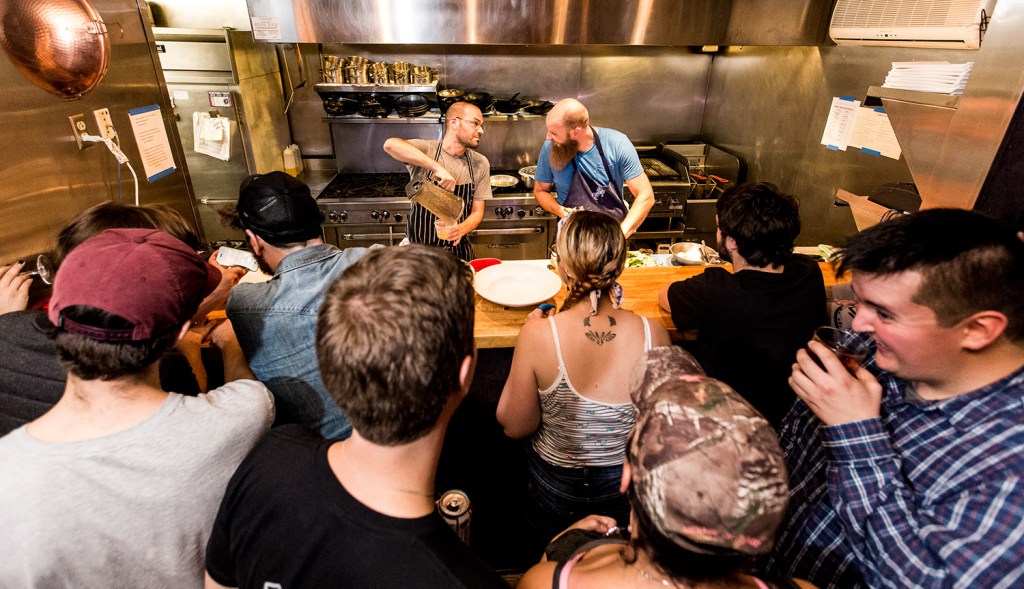
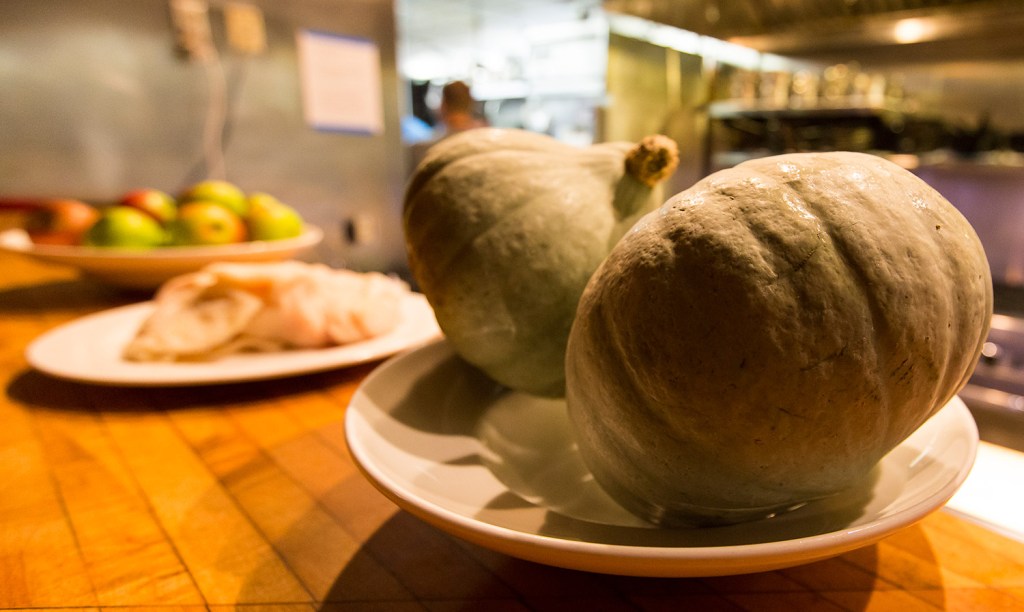
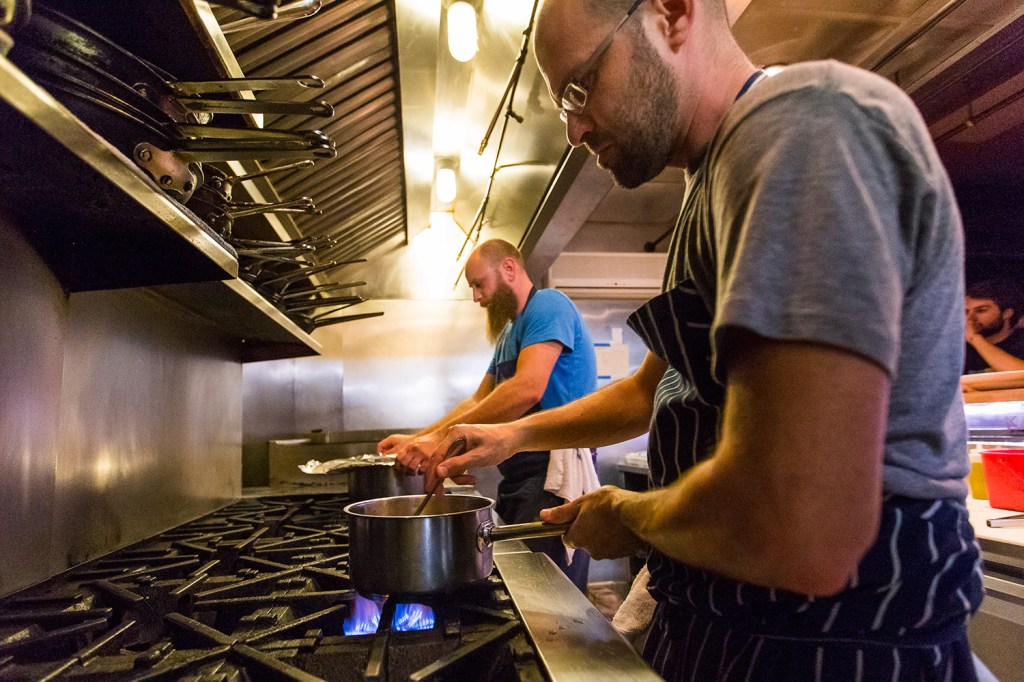
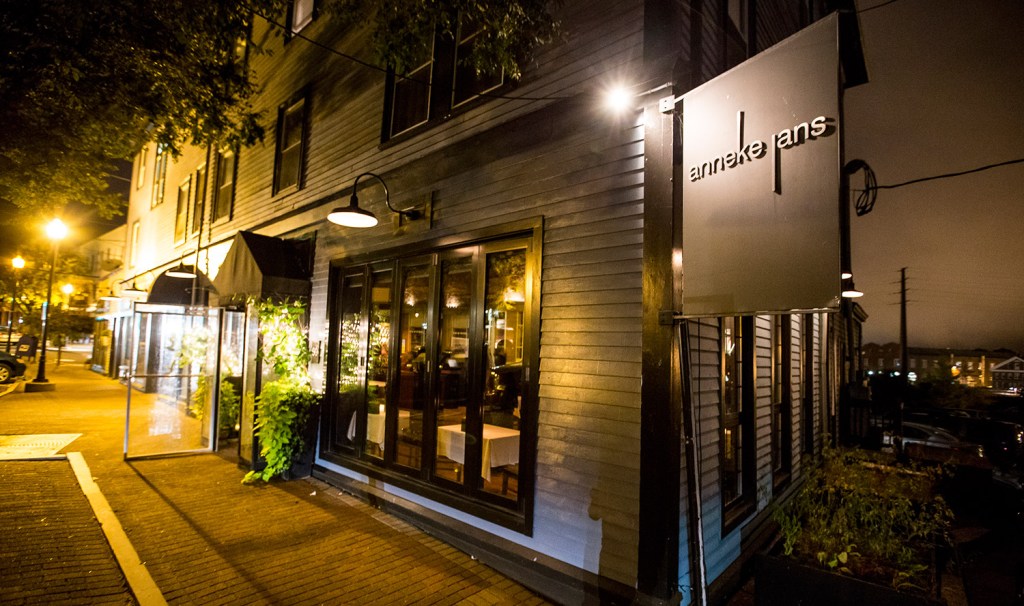
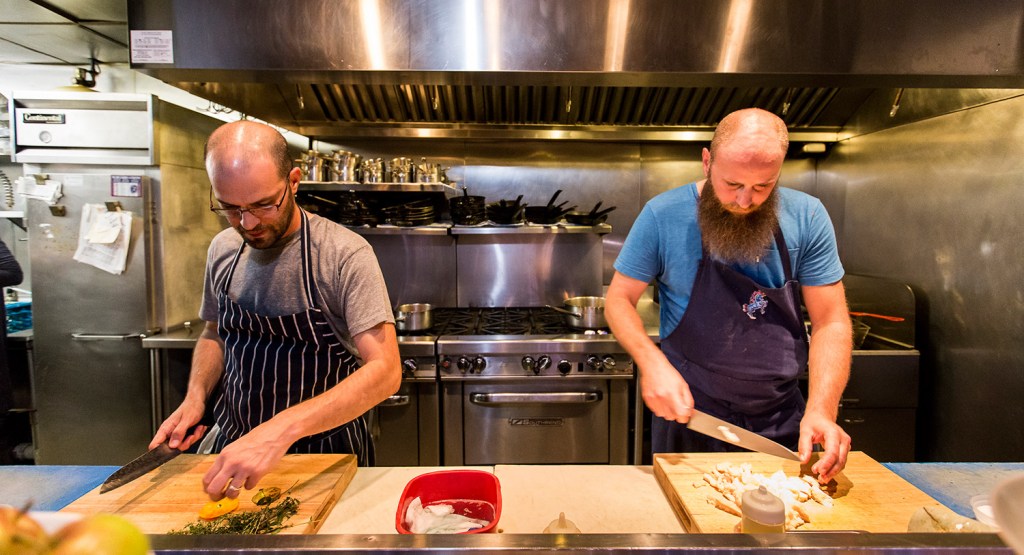
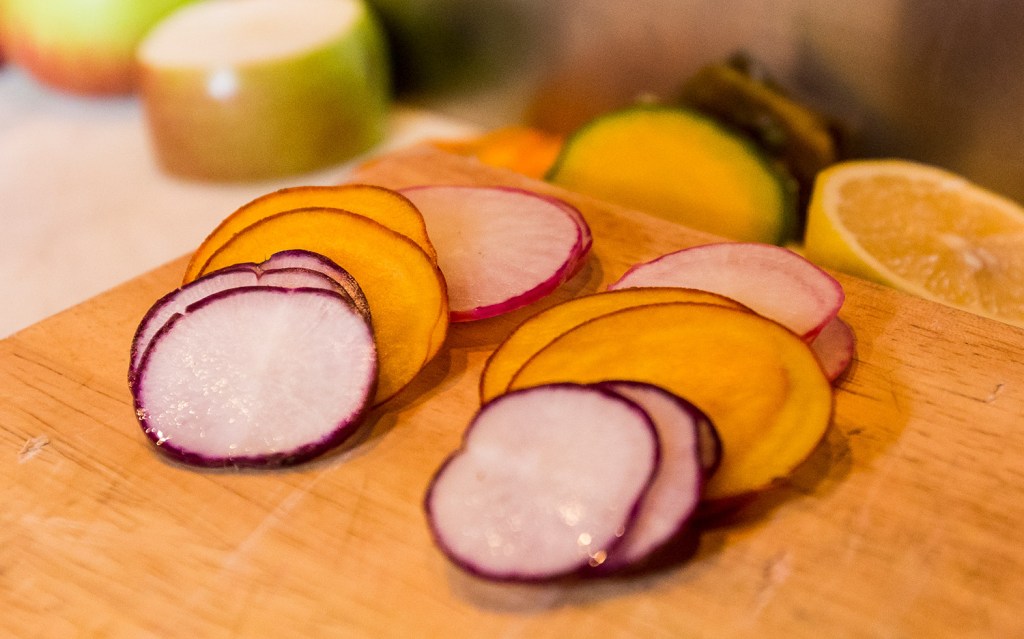
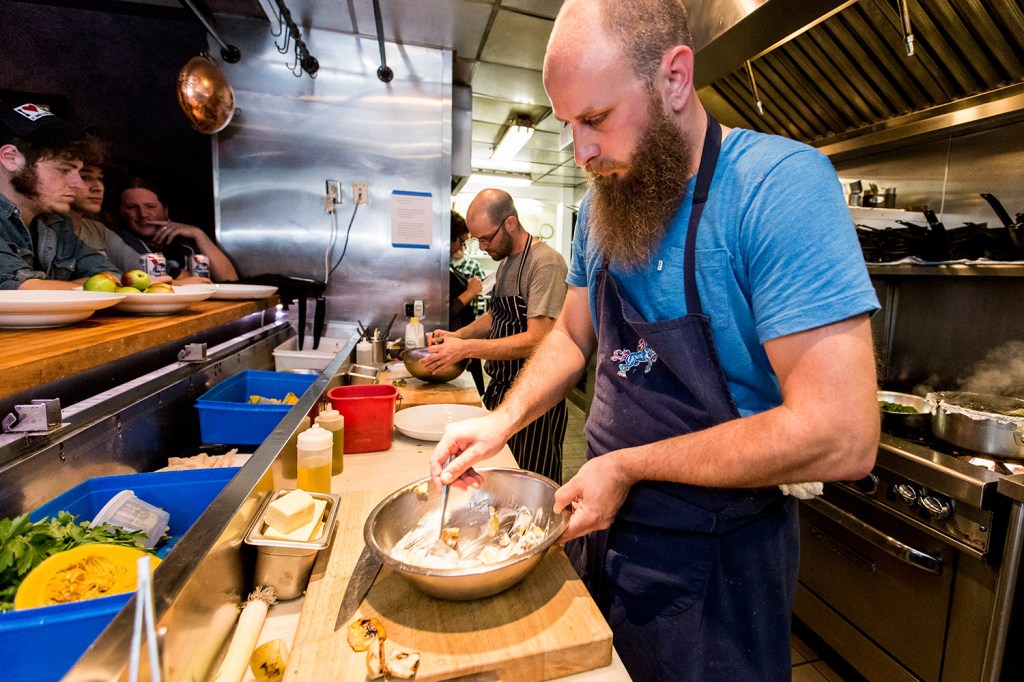
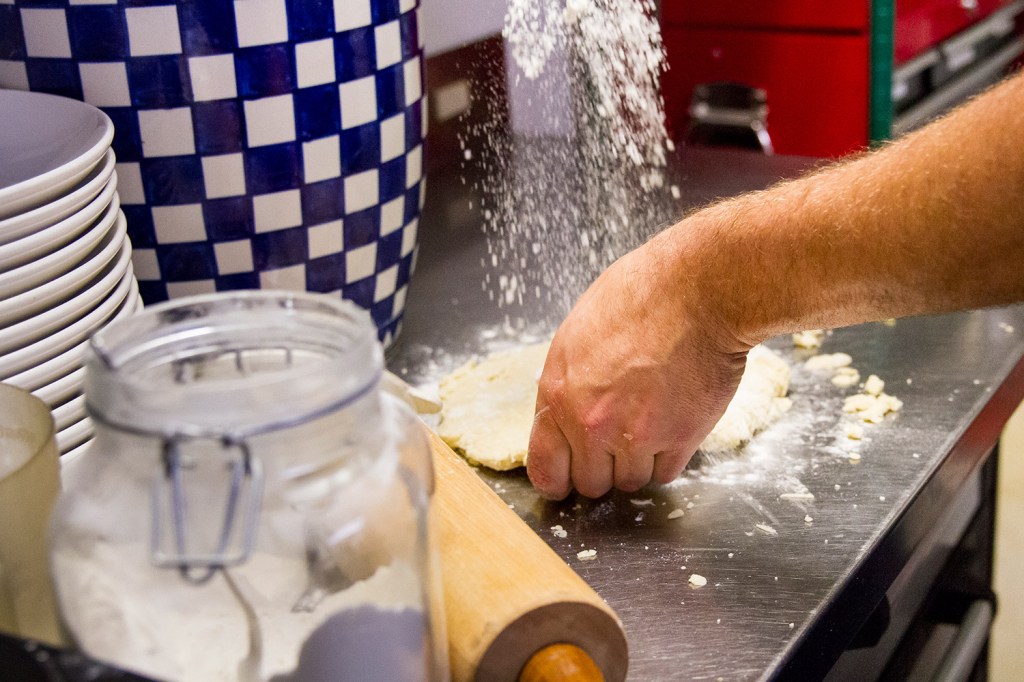
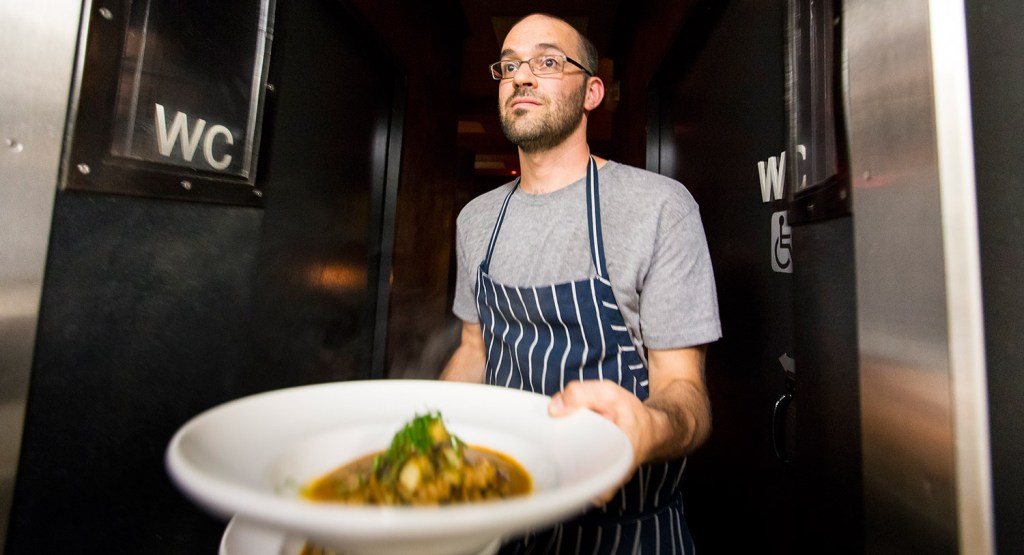

Success. Please wait for the page to reload. If the page does not reload within 5 seconds, please refresh the page.
Enter your email and password to access comments.
Hi, to comment on stories you must . This profile is in addition to your subscription and website login.
Already have a commenting profile? .
Invalid username/password.
Please check your email to confirm and complete your registration.
Only subscribers are eligible to post comments. Please subscribe or login first for digital access. Here’s why.
Use the form below to reset your password. When you've submitted your account email, we will send an email with a reset code.